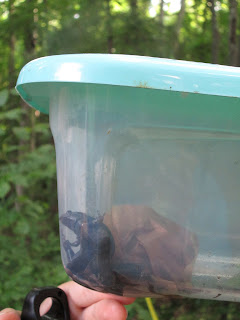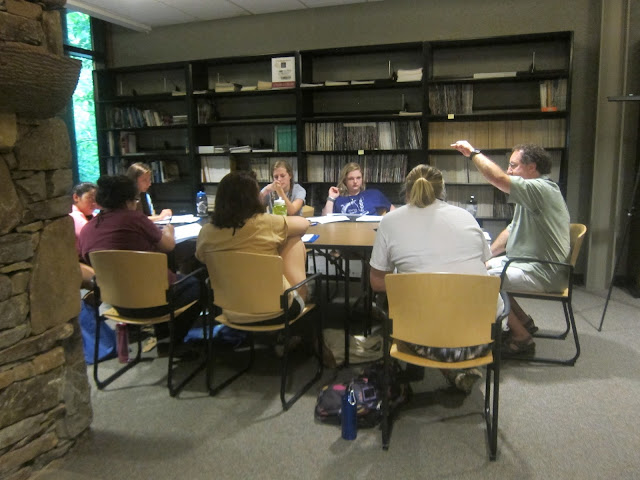Stop Copying Me! : A Serious Spin on the Mimicking Game
By: Katie Trischman
What We Did
With only a map and a GPS, each group set out to find their own sequence of geocache stations and slowly discover the possibilities of biomimicry.
Biomimicry is taking inspiration from nature and solving current issues with these models from nature. It sounds so surprisingly simple, yet humans have remained trapped in their ways of doing things for thousands of years. Where do we look for our solutions, and how do we translate the natural world into industry?
We not only found inspiration in each station but also all around us in the marshy woodland of Catawba's ecological preserve.
What We Learned
 |
| Our amphibious friend: the salamander |
One source of inspiration was our amphibious friend the salamander (which I personally find to be quite cute). These unique creatures can excrete a milky substance from their skin when threatened by blood-sucking leeches (eww) which causes the leeches to unlatch from the salamander's skin, which is really important for the salamanders as they need their moist skin for respiration.
Salamanders also have incredible regenerative abilities. By looking into how salamanders can naturally do these activities, our groups found many different problems that salamander-inspired solutions could solve. One camper's idea was to look into how salamanders produce their leech-proof substance to better create leech repellant that causes no damage to the environment. Another person suggested looking into the regenerative abilities of salamanders to help with medicine and possibly stem cell research.
Another geocache station featured the beautiful and delicate butterfly. But are butterflies really that fragile? If they are, how is it that their wings are always brilliant in color and never affected by wear and tear despite the fact that they are never witnessed grooming themselves?
Many people know that butterfly wings are made up of flaky scales, but few realize what this means. Butterfly wings are self-cleaning; the scales on butterfly wings are constantly replacing and cleaning themselves. Inspiration from butterfly wings can be used to create paint on buildings that can clean itself, and even fabric dyes are starting to search for a way to self-clean.
We found many other geocache stations, all of which offered inspiration for new solutions. In reality, the possibilities are as endless as nature itself. Any organism or product of an organism can offer a new prospective on issues that we, as humans, once viewed as unsolvable. Our problems are only as difficult as we make them, and by keeping our minds open to inspiration from the environment, we can find all sorts of solutions where we once saw roadblocks.
And so I invite you, dear reader, to keep your mind open and find inspiration in the world around you. It's time for us to mimic the most beautiful and complex machine in the world: the earth.



Comments
Post a Comment